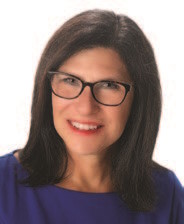Setting Up and Organizing a Study Space
Attention Magazine October 2023
Back-to-school success depends on a great home study space for your kiddos. With the best intention, families often add a desk to their kids’ bedrooms for studying and homework. Adding a desk to their rooms might be the answer to some students’ productivity, however, there are other options for families to consider. Here are some setups and strategies for back-to-school homework study spaces.

Prime real estate for studying
Decide on what space works best for you and your student. When you have work to get done, do you do it in your bedroom? If you had the experience of living in a college dorm room, is that where you did your best studying? Many college students avoid doing work in their rooms. Instead, they go to the library for quiet and desk space.
Choose a location where your student can avoid distractions. Consider the dining room, if that’s an option. It is often an uncluttered space with a big table. You can view how homework is progressing and also step in if help is needed.
Add interest by creating multiple locations for study. Your student could work in the family room, outside under a tree, or at the coffee shop nearby. Each location gives your student the opportunity for tweaking what works best given the seating, internet access, and focus.
Dig in on details of ergonomics and lighting
Keep in mind that a good environment extends beyond location. A desk or table conveys that work is being done and keeps your student at work. Your student might like a standing desk or rolling table top. A chair that supports your student’s posture and good lighting are important parts of your study space. Some students prefer “spinning” chairs or yoga balls that help keep their interest while studying. Portable, battery-operated lamps can be added to any space to add light. Sit with your student as they begin their homework to experience the environment.
Consolidate resources and supplies
There’s stock and back stock. Elementary school and middle school students need supplies to complete their assignments. Take stock of what you have for school supplies and create a caddy or cart that can travel with them to their study space.
They will likely need a supply of writing utensils, paper, scissors, and a stapler. You can organize this in plastic boxes and a plastic caddy. Keep restocking supplies in well-labeled containers. Categorize the items by group so you know what you have and where you are storing it.
Stock your student’s backpack with a zipper case with what is needed at school.
What else might be helpful?
Cute counts! If you can create a dedicated space, you might want to consider adding some splash to this spot with fun wall art. An inviting workspace adds fun to after-school assignments.
A dry-erase board in the study area helps as a visual reminder of due dates. It can also be used for processing and breaking projects into manageable pieces.
Remember to add storage for completed projects and papers. A display spot for art or a shelf for projects celebrates the success of a project in the short term. Create an archive spot for these with a file box for that year. Many families photograph the artwork and create digital photo albums each year.
There is always trash with your students whether it is empty drink bottles or crumpled papers. Consider adding a trash can to the area that is big enough for a week’s worth of trash.
Engage your student in the process of designing study spaces. This means that they have buy-in and will love the finished space.


 For over twenty years, Ellen Delap, a certified professional organizer and the owner of Professional-Organizer.com, has worked one on one with clients, streamlining their environment, creating effective strategies for an organized lifestyle. She specializes in working with individuals with ADHD, helping them reach their organizing and productivity goals. Delap has been featured on the Smead podcast, in articles with the Houston Chronicle, New York Times, and Associated Press, and as a speaker with the ADDA-Southern Region conferences. She is past president of the National Association of Productivity and Organizing Professionals (NAPO) and is based in Houston, Texas.
For over twenty years, Ellen Delap, a certified professional organizer and the owner of Professional-Organizer.com, has worked one on one with clients, streamlining their environment, creating effective strategies for an organized lifestyle. She specializes in working with individuals with ADHD, helping them reach their organizing and productivity goals. Delap has been featured on the Smead podcast, in articles with the Houston Chronicle, New York Times, and Associated Press, and as a speaker with the ADDA-Southern Region conferences. She is past president of the National Association of Productivity and Organizing Professionals (NAPO) and is based in Houston, Texas.